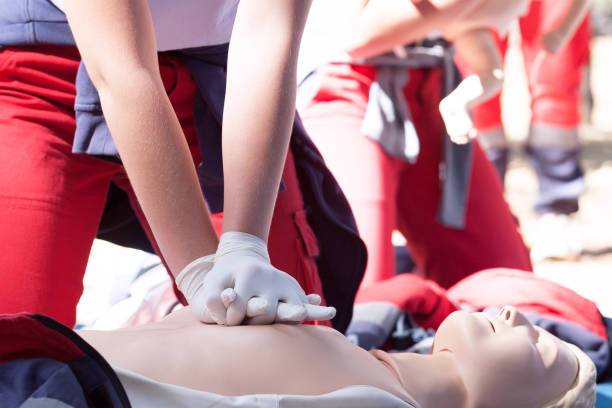What is CPR?
Cardiopulmonary Resuscitation (CPR) is a critical life-saving technique used in emergencies when someone's breathing or heartbeat has stopped.
Cardiopulmonary Resuscitation (CPR) is a life-saving emergency procedure performed when a person's heart stops beating or when they stop breathing. CPR aims to restore blood circulation and maintain oxygen supply to vital organs until advanced medical help arrives. It is crucial in preventing brain damage and increasing the chances of survival during cardiac arrest or other medical emergencies.
Why CPR is Important
Understanding the critical importance of CPR certification for fitness professionals
Life-Saving
CPR can significantly increase chances of survival by maintaining circulation and oxygen flow to vital organs until professional help arrives.
Prevention of Brain Damage
Keeps oxygenated blood flowing to the brain, preventing or reducing brain damage when oxygen supply is interrupted.
Community Safety
Widespread CPR training enhances overall community safety and preparedness for cardiac emergencies.
Buys Time
Provides crucial time for emergency medical services to arrive and implement advanced life support measures.
Additional Benefits
- Increases survival rates - can double or triple chances of survival when combined with defibrillation
- Empowerment and readiness - builds confidence to act decisively in emergencies
- Essential for fitness professionals working with clients in physical activity
Critical Timing
Without oxygen, brain cells begin to die within minutes. CPR helps maintain oxygen flow to prevent irreversible damage.
CPR Course Outline
Learn the essential steps that can save a life in cardiac emergency situations
Check for Responsiveness
Shake the person gently and shout to check if they are responsive. If there is no response, the person is not breathing normally, or breathing is gasping, immediate action is required.
Call for Help
Dial emergency services (911 or appropriate emergency number) to request professional medical assistance.
Start Chest Compressions
Place the person on a firm, flat surface. Position hands on center of chest, compress at least 2 inches deep at 100-120 compressions per minute.
Provide Rescue Breaths
After every 30 compressions, tilt head back, lift chin, and give 2 rescue breaths while watching for chest rise.
Continue CPR
Alternate between 30 chest compressions and 2 rescue breaths until help arrives or the person shows signs of life.
Study Materials
Access comprehensive reference materials to enhance your CPR knowledge
CPR Reference Guide
Comprehensive textbook reference developed by Canada Personal Training covering all essential CPR techniques, emergency protocols, and life-saving procedures.
Certification Details
- Valid for 2 Years
- Hands-on Training
- Digital Certification Card
- Emergency Response Training
After passing the exam, you can download your document from the login profile section. The username and password will be sent to your personal email address.

